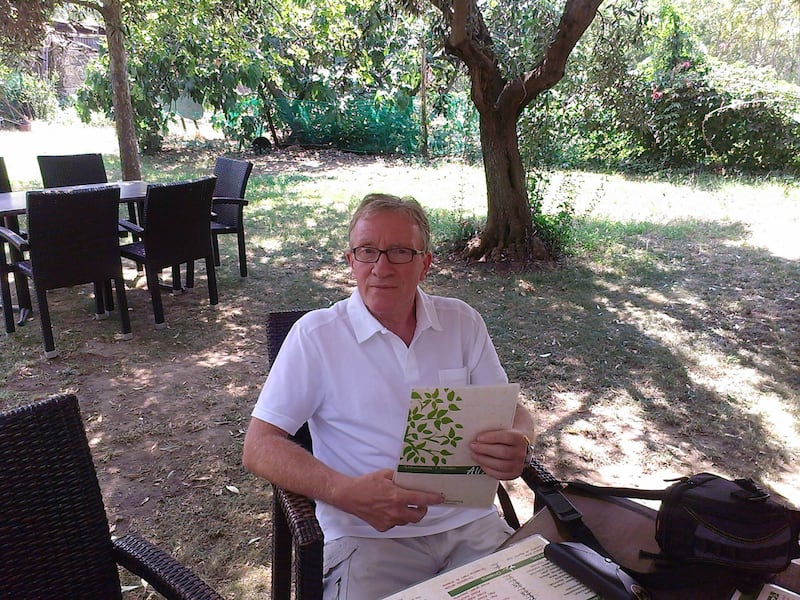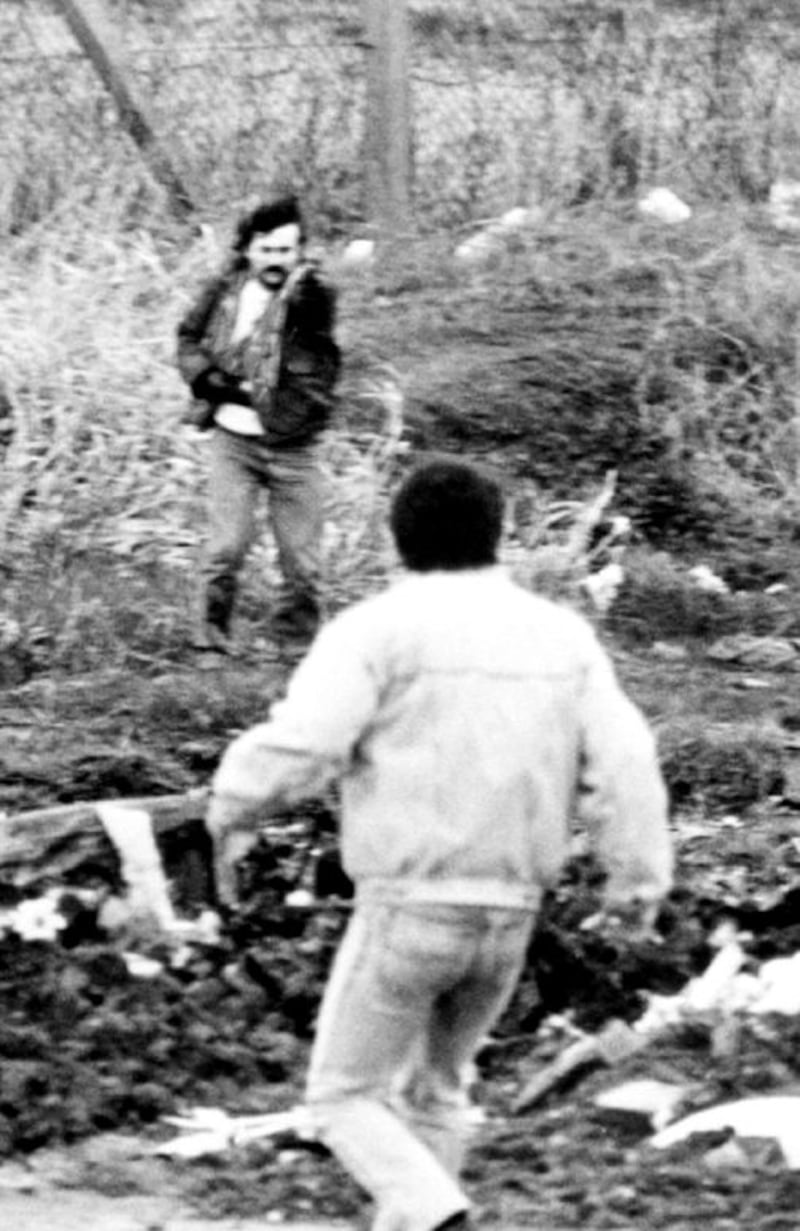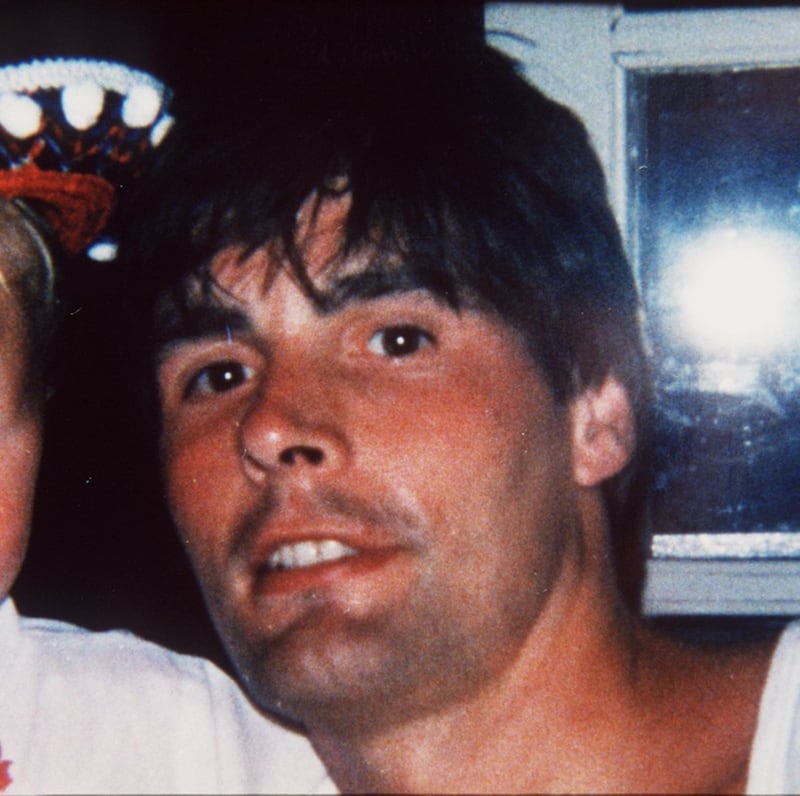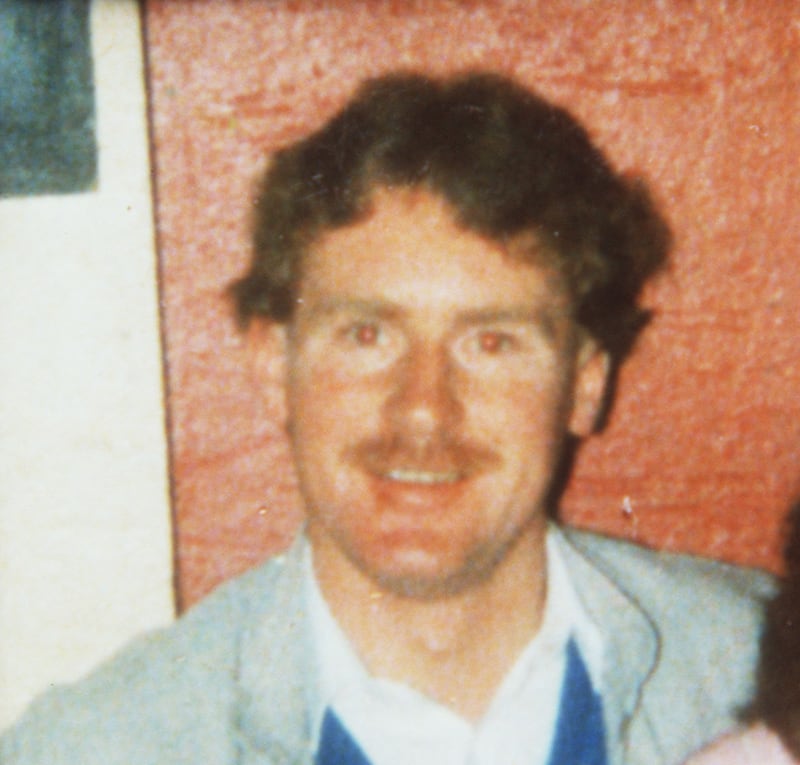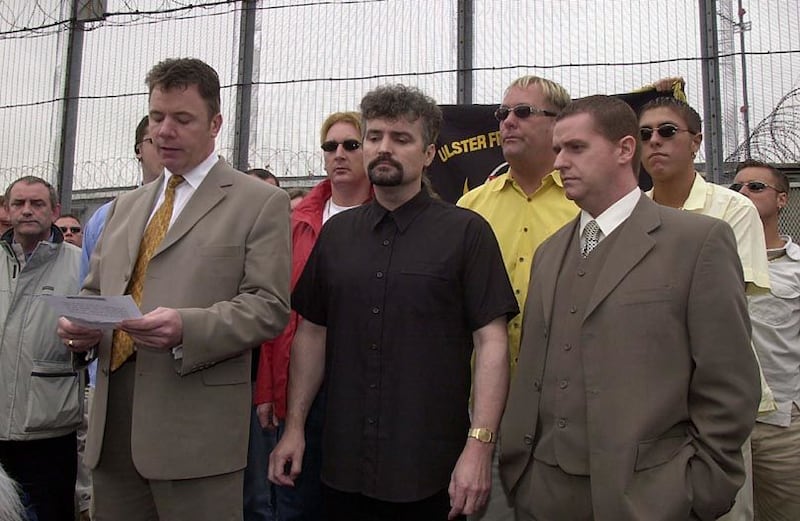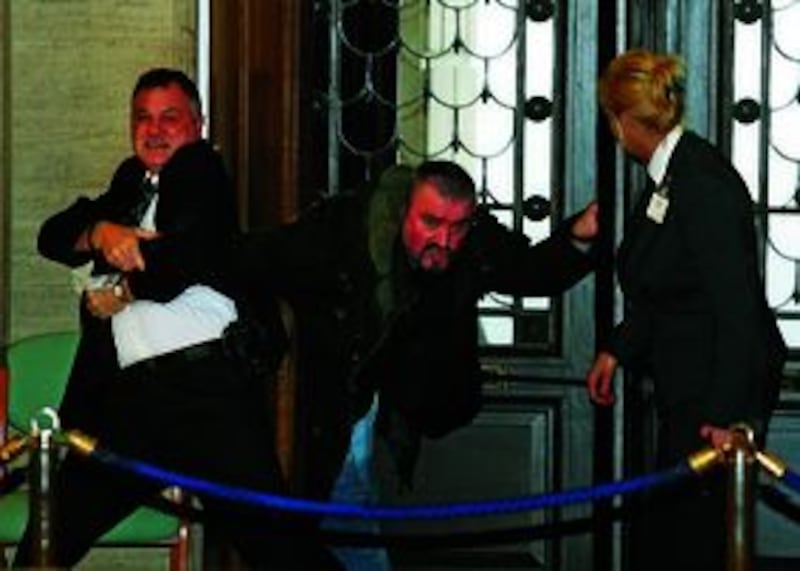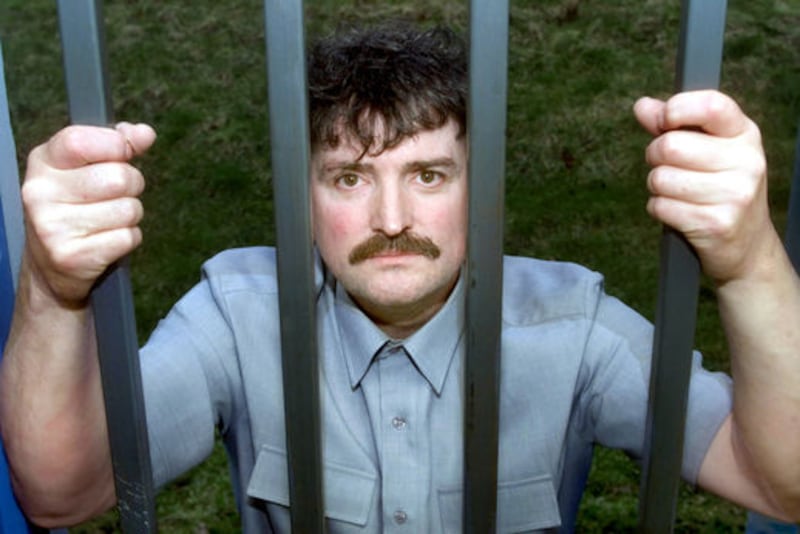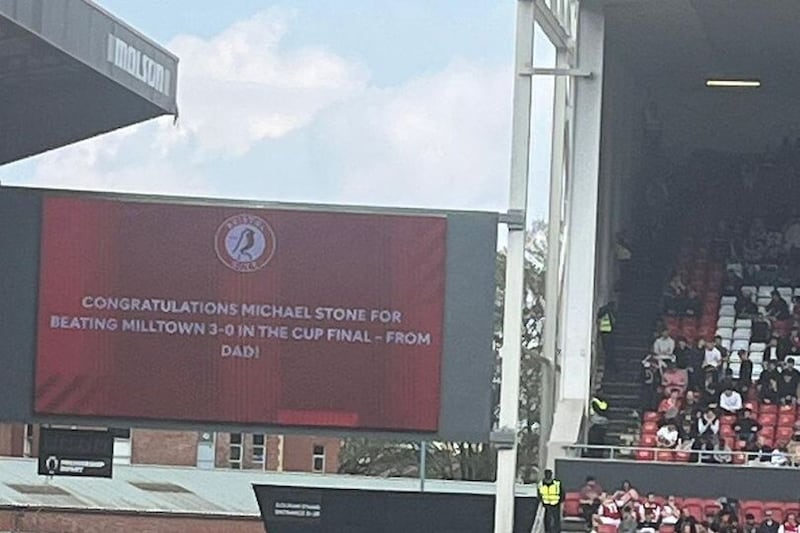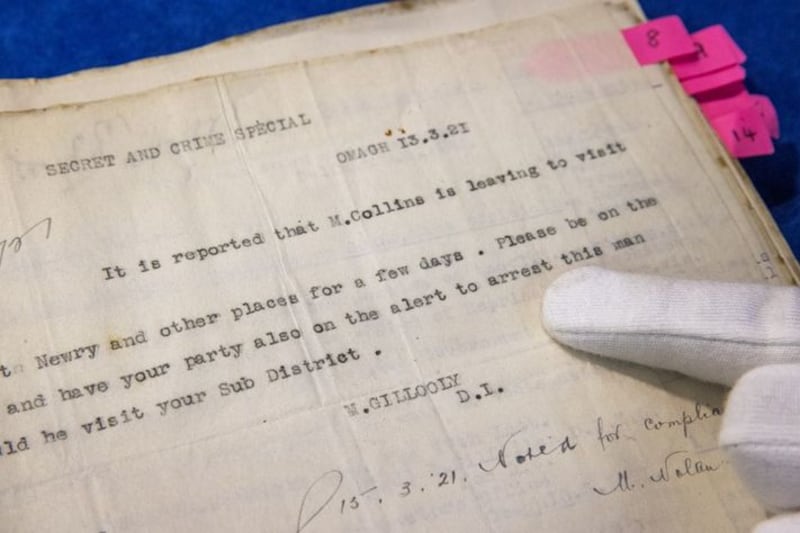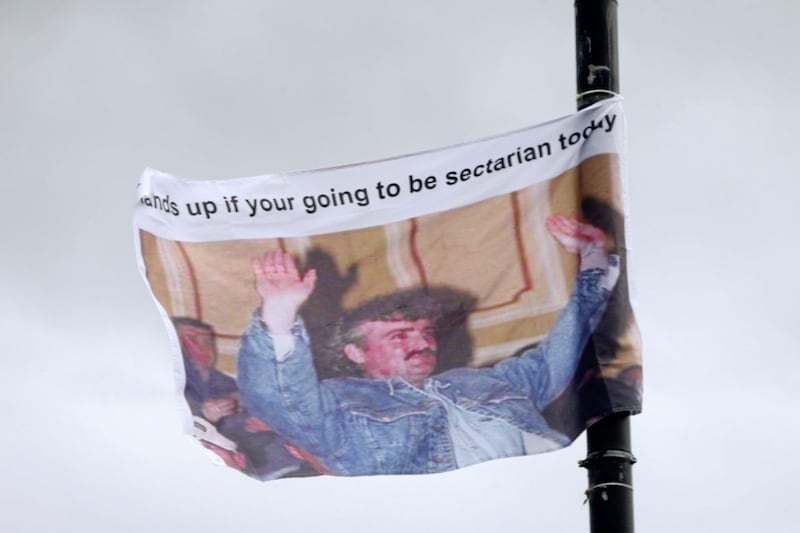ON November 24, 2006, I was in my study in New York when I received calls from television networks anxious to talk to me about the loyalist hitman Michael Stone.
I had almost forgotten about him, my book Stone Cold, having been published 14 years earlier, but I had never underestimated his innate attraction to extreme violence and his craving for celebrity.
He was back in the headlines, choosing violence over peace at a time when his own society was trying to heal, following decades of tribal bloodletting. He had entered parliament buildings, hoping to assassinate Sinn Fein leaders Martin Mc Guinness and Gerry Adams, but his plan, crudely assembled, had been doomed to failure and ridicule.
This time, he had been armed with a replica pistol, a knife and what were later described as “viable explosive devices”. Had he not been a notorious terrorist, his actions would have been dismissed as a bizarre parody.
It had the hallmarks of a wannabe terrorist operation, leading his lawyer to describe it in a subsequent court hearing as a piece of performance art. It was more than that, yet it still lacked the clinical preparation and ferocity he had demonstrated when slaughtering innocent people in the 1980s.
This time Stone was acting alone, devoid of the support mechanisms in place during his terror spree from 1984 until March 1988. During that period he committed the major act that brought him to international prominence, namely his attempt to assassinate the IRA leadership at a funeral in Milltown Cemetery.
At the time of his Rambo-style assault on the funeral in Milltown, the British terror agent Brian Nelson was running the UDA’s assassination campaign out of UDA HQ in east Belfast.
He was familiar with Stone and would have kept his British intelligence bosses updated about Stone’s plan to take out the entire IRA leadership at a graveside ceremony for three of the IRA’s ill-fated Gibraltar bomb squad. Nelson assisted Stone by advising and directing others to help him devise his Milltown strategy, and to prepare him for the operation.
Nelson may also have, on orders from his superiors, arranged the murder by loyalists of Brendan Davidson, the IRA’s commander in the Markets area. What makes his murder so fascinating is that Davidson was one of the most successful British terrorist agents in the city. It was he who betrayed the IRA’s Gibraltar operation.
His untimely demise is one of those secrets of the time yet to be fully unraveled. I was the first writer to expose his role as an agent in my book The Dirty War. Nelson mysteriously passed away in 2003 from a reported brain hemorrhage, ensuring that he took his secrets about Stone and other killers he controlled to the grave with him.
Nevertheless, it is clear to me Stone was controlled by Nelson and other senior UDA figures.
In 2006, when I received the phone calls about Stone’s parliament escapade, I was reminded of a story from months earlier. I was contacted by a television producer anxious to talk to me about Stone.
She pointed out that he had participated in a television series, Facing the Truth, in which he had met the family of one of his victims and had denied he had been the culprit. The producer suggested I might like to fly to Northern Ireland to debate with Stone on live television what I had written about him. It was a ludicrous proposal, which shocks me to this day, and I told her so at the time.
“Why on earth would I wish to defend what I have written about Stone? It is the truth. He knows it. I have no desire to justify myself to a killer,” I said.
I added that, if the families of his victims felt it would be helpful to talk to me, I would meet them at any time, even in a live television setting.
I cautioned her that Stone was a very dangerous man, and she should be careful in her dealings with him. I suggested that it was only a matter of time before he reoffended.
“Don’t trust anything he tells you,” I remarked. I never heard back from her.
I can recall another observation I made in the course of my conversation with the producer. I confessed it was my contention that Stone and Lennie Murphy, the Shankill Butchers’ sadistic leader, had a lot in common. They were both cunning narcissists obsessed with celebrity, Stone perhaps more so. He craved hero worship beyond his own tribe. He wanted the world to know who he was.
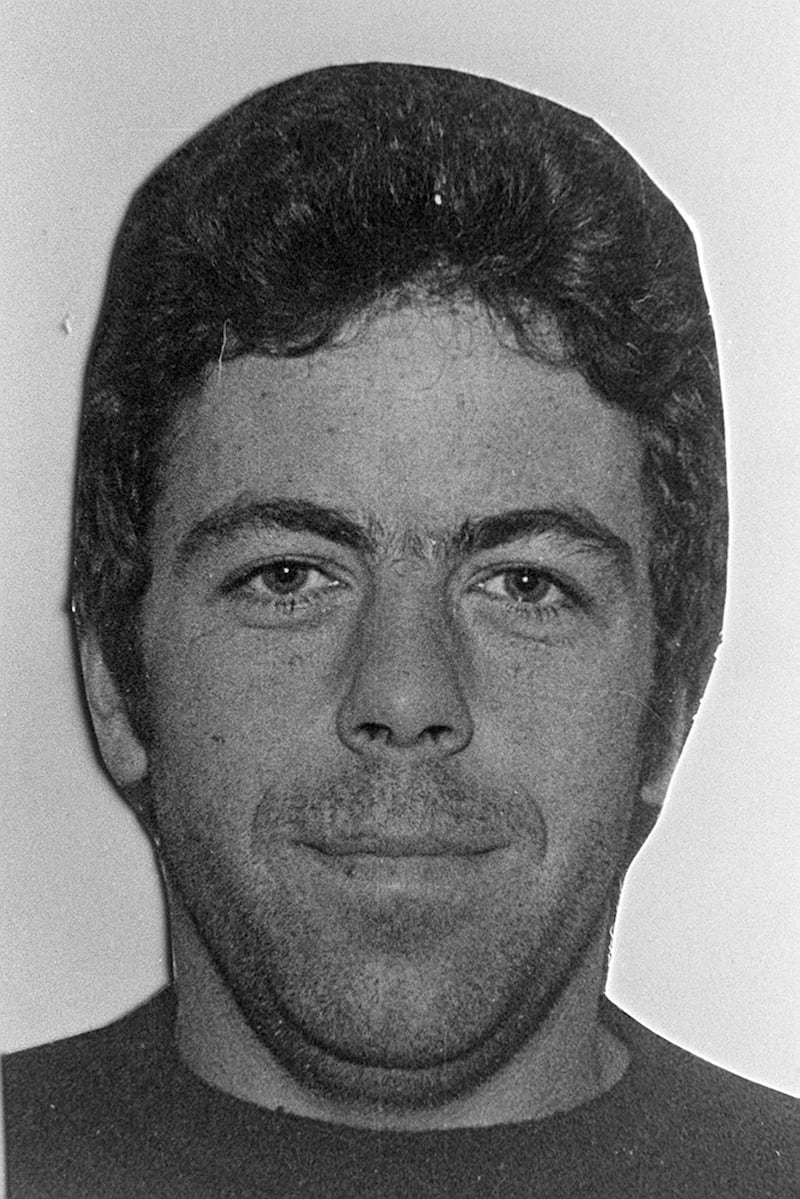
Both men had also 'suffered' under the mistaken belief, spoken in whispers by many in their community and equally by Catholics, that they were hiding their Catholic ancestry. While it was a fiction, Stone and Murphy’s awareness of the rumours made them much more viciously sectarian, or 'Super Prods', a term the UVF leader Gusty Spence once used when we were discussing Murphy.
Spence was convinced that men like Murphy had to work harder at being more bitter and vicious towards Catholics to prove their bona fides to their loyalist contemporaries. Murphy by slaughtering innocent Catholics probably felt it washed away the stain of being considered Catholic.
UDA leader Tommy Herron carefully concealed his Catholic family links, which might have motivated him to take a young Michael Stone under his wing. Herron was highly protective of Stone, knowing how any taint of Catholicism in his background would have doomed him, if not stunted his growth as a UDA paramilitary.
More importantly, killers like Stone and Murphy had an attachment to what the poet W H Auden called “negative creation”. In The Dyer’s Hand, Auden crystallized the nature of the murderer in the following way: “Every murderer is the rebel who claims the right to be omnipotent. His pathos is his refusal to suffer” - I would add “his refusal to feel remorse.”
Murphy never displayed remorse. Stone’s attempt to do was nothing more than a ploy to sell his post Peace Accords image as a reformed hitman.
In his terror career Stone was cleverer than Murphy at promoting his brand of hatred and murderous aptitude. He even marketed locks of his hair to admirers while he was incarcerated. The first time I met him in the Maze Prison he had already established himself as the poster boy for mass murder. Like Murphy he was a sociopath, lacking Murphy’s raw sadism.
The reason I felt Stone would re-offend after his 2000 release under the Good Friday Accords was that he had never ceased to revel in his killer status. It astounded me that many people preferred to believe he had undergone a metamorphosis in prison, emerging like some of his compatriots who had conveniently claimed to have found God, like a cleansed killer.
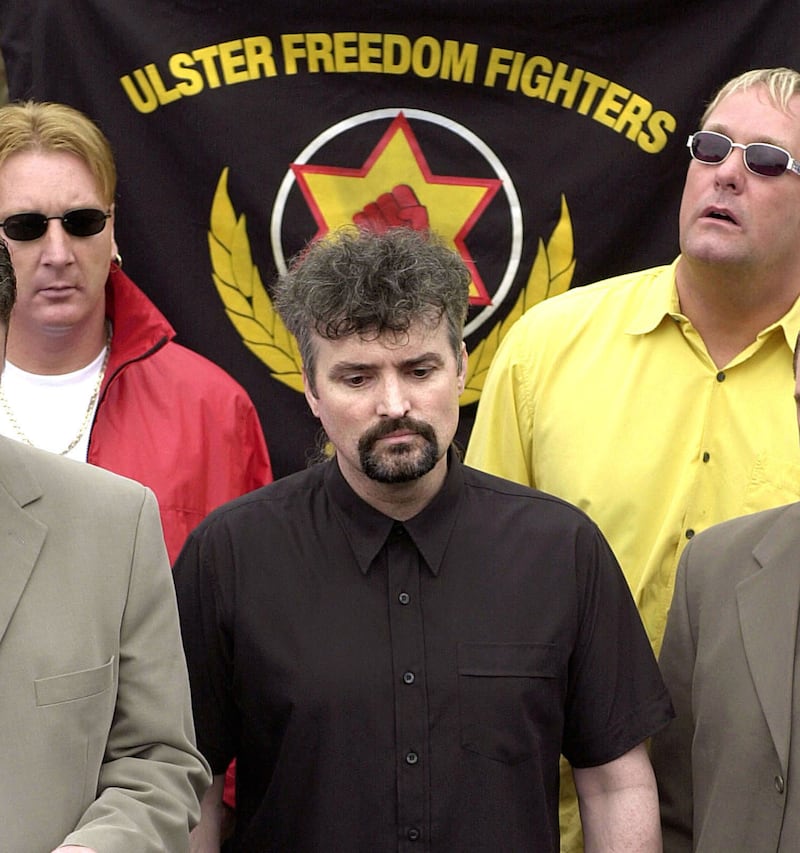
There was a genuine conviction in some quarters that the explosive personality who left his mark on the history of Milltown no longer existed. I suspected there was a desire within sections of the media to see him as truly reformed.
In contrast, I knew that the psychiatric evaluation of him after his 1988 arrest, though conducted by a genuine professional, had been processed without the kind of knowledge that would have possibly led to him being diagnosed as an aggressive psychopath. The same occurred in the case of Lenny Murphy.
His evaluation was, I contend, equally invalid because of a lack of significant information about his background and terror history that would otherwise have created scary psychological markers in his personality chart.
I have no desire to lay blame at the door of the psychiatric profession since it was difficult, if not impossible, during The Troubles to conduct extensive evaluations of men like Murphy and Stone. They were not only cunning and capable of lying convincingly; they were highly skilled at hiding their innate murderous instincts behind the overall backdrop of a violent society.
The society itself was so dysfunctional that men like these two, and others in the ranks of paramilitaries on both sides, dropped through the cracks of the mental health system and were transformed into local heroes. It is notable that the only facility for treating aggressive psychopaths in Northern Ireland during the Troubles was shuttered for lack of patients. Potential patients were often roaming the darkened streets of cities like Belfast, searching for the vulnerable.
Such disturbed killers and their accomplices were accepted members of society and were often bona fide heroes in paramilitary ranks, guilty of the most vicious murders. Many of them have never been brought to justice. In a normal society they might have been shunned, or confined to prison for kicking someone to death on the way from a football match. At some level they might have been institutionalized, but not so during decades of tribal strife.
I contend that Stone required psychiatric confinement at the time of his arrest in 1988 for the Milltown massacre, but the authorities made no such recommendation. As a consequence, his release in 2000 may well have suggested to him that he had been absolved from any wrongdoing. Therefore, he had no moral obligation to his victims and their families.
On his return to society he quickly became a colourful celebrity. He found his way into gossip columns after he was lauded for establishing himself as a self-trained artist. In reality his paintings were of a rank amateur, yet surprisingly they were sought after and in some cases sold for thousands of pounds.

He quickly became a man-about-town. It was more than he could have hoped for and was exactly what he had always craved.
During my first conversation with him in the Maze in the late 1980s, he boasted about wearing Boss suits to discos and bedding Catholic girls. He tossed in the Catholic reference like a throwaway line. His motive was possibly to indicate his sexual power over Catholic females who did not know he was a loyalist hitman. He later told me that he had fathered a child with a Catholic girl, though he never provided proof.
The Michael Stone I knew was the same Michael Stone released into society in 2000, but he came loaded with a little more “baggage.” In his twisted logic, his failure to kill Mc Guinness and Adams in 1988 had been a classic failure he could not accept.
Celebrity was not enough unless he fulfilled what he considered his true destiny to be the ultimate loyalist hero. Unseen by others, he had spent his time in prison privately wallowing in self-loathing for his failed Rambo attempt to wipe out the IRA leadership. The boy who grew up believing he would one day impose himself on the world and prove himself to a mother he had never known was not finished with terror.
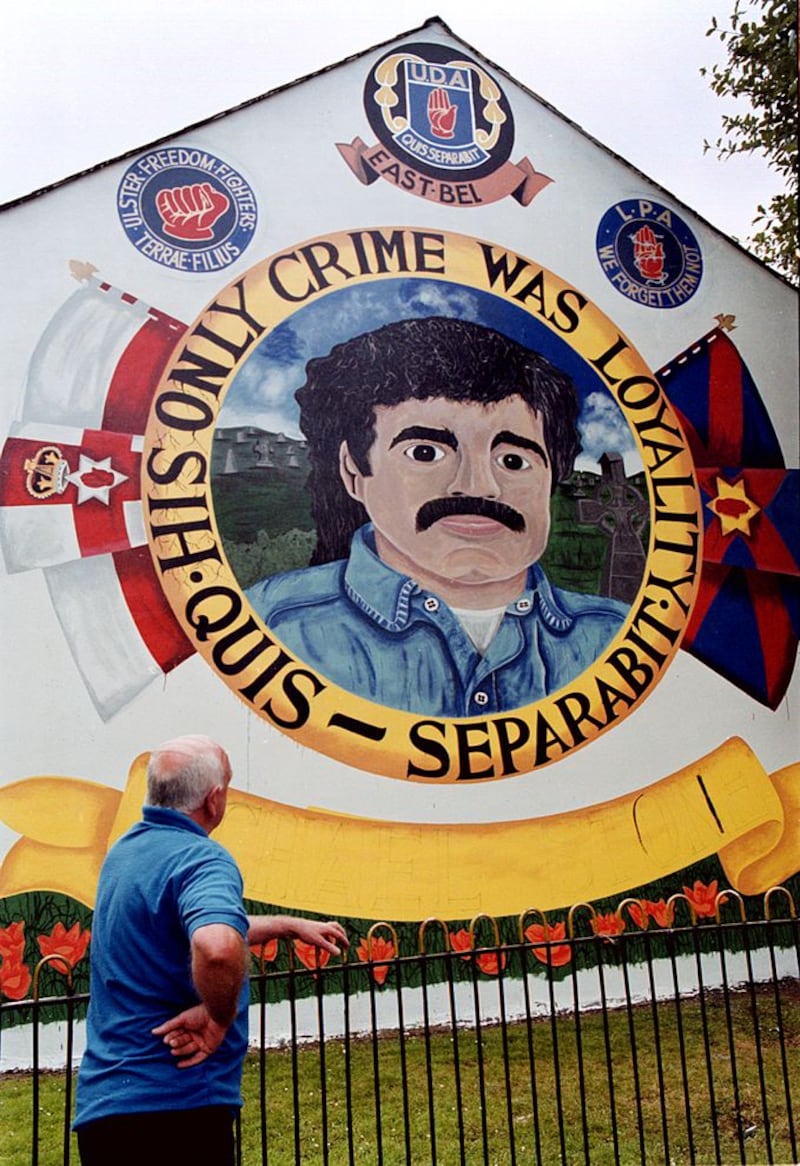
On the streets of Belfast he was suddenly the Rambo-figure everyone remembered running through Milltown, firing at a chasing mob. He was free to walk amongst people he would have thought nothing of killing 12 years earlier. He had swapped a prison cell for the adulation he believed he was due, but it was not enough in his eyes.
One of the factors that contributed to Stone finding it easy to win over many people on his release was not just his Rambo-like cinematic image, but his penchant for role playing; a dominant trait that dominated his twisted mindset. He could be charming as well as scary.
I can recall vividly a conversation with him in a visitors’ stall in the Maze Prison. He quietly drew my attention to a prisoner seated behind him, pointing out he was a republican. Drawing closer to me, Stone whispered if he wanted he could swivel round and snap the other prisoner’s neck.
At the time, Stone was bulking up with daily body-building exercises to fashion an image of himself as someone who should not be messed with. In reality, however, he was not such a tough guy. He only survived in prison because the paramilitaries on both sides had an unwritten rule that they did not target each other on the inside.
Republicans sources later told me that they had very much wanted to kill Stone in prison, but had been issued with strict orders by their leaders not to to touch him. Some loyalist prisoners who knew him well shared with me that they regarded him as a big “softie.” They didn’t care much for his celebrity status, especially when he began selling locks of his hair to adoring loyalist girls.
I suspect that there is so much we still do not know about Stone’s role as a killer. Given the fact that the loyalist paramilitaries were so heavily infiltrated, manipulated and controlled by elements of Special Branch, MI5 and off-the-books British Military Intel outfits, it is difficult to discern exactly who was directly connected to Stone’s campaign of terror.
His case fits into a dirty war I fear has not been fully investigated. It is unlikely that it will be exposed by the latest announcement of a major investigation out of London, costing approximately £35 million and scheduled to last five years.
In relation to Stone, and perhaps the Troubles in general, one is entitled to ask uncomfortable but perhaps illuminating questions about the war in the shadows, especially in respect of the use of terrorist agents. For example, whether Stone was an unwitting pawn, or a willing terror partner of British intelligence, would British intelligence and Special Branch have been legally justified directing him to eliminate the IRA leadership in 1988?
Had he achieved his aim, would his actions have saved innocent lives by removing the core of the IRA’s leadership and thereby morally justified using terrorists in the employ of the state? Would the removal of Adams and others at that time have led to a peace deal much sooner?
Did British intelligence, knowing Stone was going into Milltown on that March day have a moral and legal duty to stop him?
Those questions lie at the core of the dirty war and will have to be answered over time, but perhaps I am being over optimistic when I make that stipulation. I am certain Stone never told the truth about his Milltown escapade. He knew the identities of his terror associates, though he may not have known who was running him. It is entirely conceivable he calculated that his life depended on not being truthful about his role in the Milltown massacre.
Had he come clean when it happened, he might have suffered the same fate as the late loyalist hitman, Billy Wright, whose daily body-building exercises did little to protect him when it mattered most. Like terror agent Brian Nelson Wright took many collusion secrets to the grave.
The reason Stone has never posed a threat to those in the intelligence community opposed to truth-telling is that they know he is a sociopath with serious mental issues. That makes him less than a credible witness.
In contrast, Wright had more credibility and was much more articulate than Stone. I have come to believe his death was part of an effort by elements of the intelligence community to silence him, and to eliminate the threat he posed to the peace process.
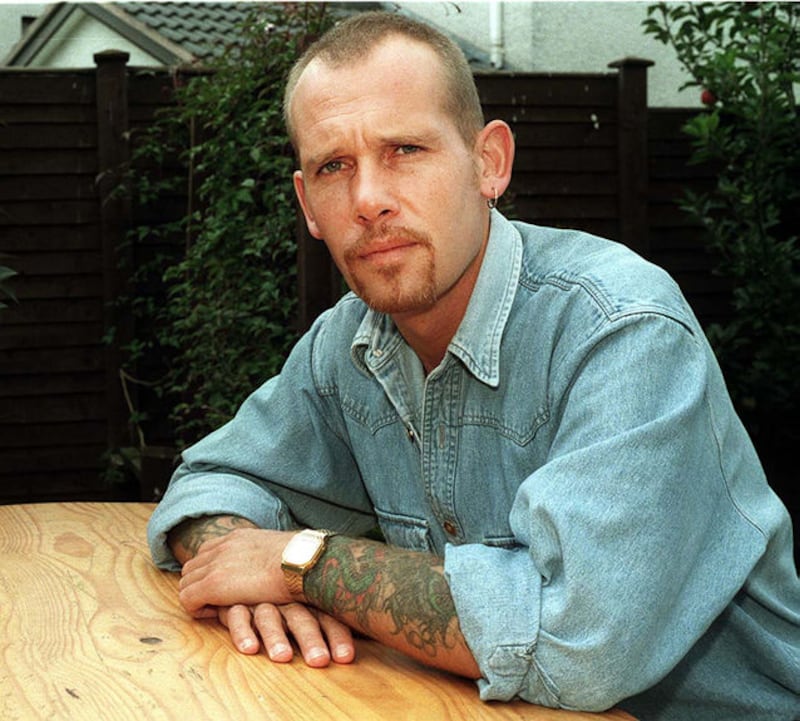
Wright was a man with the kind of secrets that would have exposed an undercover war dominated by collusion. He was a pawn of British intelligence, exploited as an assassin of the state. Wright, I am convinced, was supplied, just like Nelson, with lists of people, not all of them republicans, marked for death.
Having met and interviewed both men, I am convinced Wright had a wealth of knowledge of a dirty war in which he was an important cog. Had he revealed all he knew, I feel most journalists would have been inclined to give weight to his revelations.
I am convinced he naively believed British intelligence would protect and reward him for his service. Unfortunately, he was, as he had proven to his intelligence handlers from time to time, more than a little unstable. I recall when I met him he talked about “walking” with God and the devil.
Intelligence sources have subsequently suggested to me that he was considered a "loose cannon". It was feared he had a tendency to "plough his own political furrow.” Perhaps his critics also concluded he could not be trusted to keep secrets – the kind of secrets that would have exposed the underbelly of Britain’s dark war against the IRA. Therefore, he had to be eliminated. That is, of course, speculation, though his death does have the smell of treachery about it.
Stone has found it hard over the years to draw a line between truth and fiction.
Unlike Wright he was always instinctively drawn to celebrity like a fly to a lit bulb. Unlike Wright, however, he was no ideologue. It is noteworthy that both men had severe psychological issues, many stemming from their childhoods. In Wright’s case, his childhood was both sad and traumatic. It is likely, from my knowledge of them, that they were both victims of sexual abuse.
There are many strands to the lives of killers like these on both sides of the conflict, which require renewed investigation by journalists, psychiatrists and murder squad detectives. I feel it is worth noting that the new investigation into the dirty war will suffer from not having a major input from local detectives, some of them retired, who were excellent investigators during the Troubles.
I personally know detectives who would bring valuable expertise to any inquiry into the scores of cold cases on file, and more importantly into the role of the intelligence community in its use of terror agents during the time of the dirty war. The more light shed on this aspect of the Troubles the better chance society will have of healing in the years to come.
I was asked recently if I believed Stone could be a useful member of society if he was again released from custody. I responded that that until Stone underwent a thorough mental health evaluation, and was placed on a programme that monitored his mental progress over an extended period, he should remain confined.
- Writer and journalist Martin Dillon is the author of Stone Cold, a portrait of the killer Michael Stone, The Shankill Butchers and The Dirty War. He began his career as a newspaper reporter with the Irish News and later became a programme editor with the BBC and a writer/producer with its award winning Timewatch. As a journalist and writer his life has been intertwined with the history of the Irish Troubles and its darkest days. He is one of the most important voices of the conflict. His latest books, soon to be published, are a novel and a memoir entitled CrossingThe Line: My Life On The Edge. He now lives with his family in California
